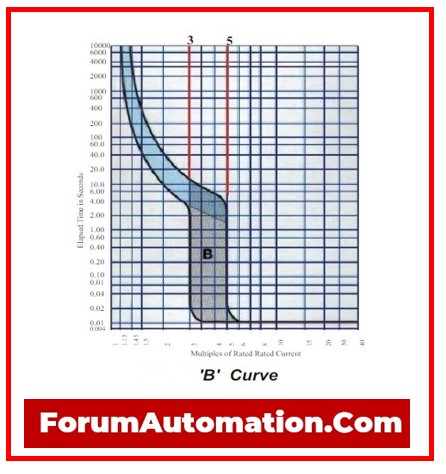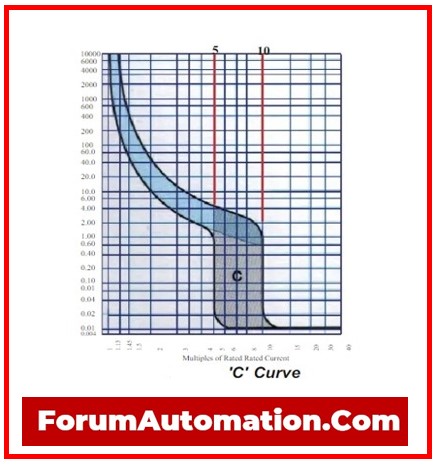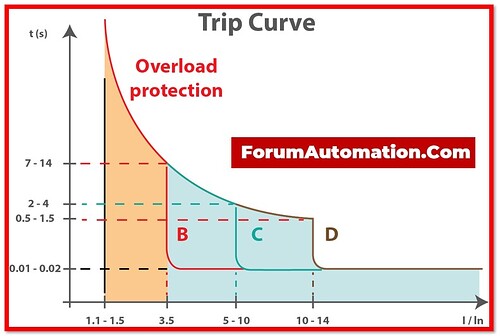Electrical protection devices known as Miniature Circuit Breakers (MCBs) have unique curves that show how they react to different overcurrent levels.
These curves assist in determining the speed an MCB can trip as a result of various fault currents. The typical protection curves for MCBs are shown below.
Type A, B, C, and D curve breakers are circuit breakers distinguished by their tripping characteristics and responsiveness to various types of fault currents.
Circuit breakers of this type are widely used in Europe and are described by International Electrotechnical Commission (IEC) specifications.
Type A Curve
Curve breakers of type A have an inverse time characteristic & are typically employed to safeguard general-purpose circuits & loads with moderate inrush currents.
They are intended to offer moderate overload protection and rather extended time delays.
Curve breakers of type A are widely used in residential, commercial, & light industrial applications.
Type B Curve

Type B curve breakers have an inverse temporal characteristic as well, although they are more sensitive and respond faster than Type A.
They are intended to provide greater overload protection & quicker trip times. Type B curve breakers are ideal for safeguarding circuits & loads with large inrush currents, such as
- Motors and
- Transformers.
Type C Curve
Type C curve breakers feature a shorter time delay & more sensitivity than Type B curve breakers.

They are intended to provide enhanced protection for high inrush current circuits and loads, such as
-
Discharge lamps,
-
Fluorescent lighting, &
-
Power supply.
Type C curve breakers respond faster to short circuits & have larger fault current levels.
Type D Curve
Type D curve breakers are the most sensitive and have the quickest response times of the four types.
They are intended for circuits and loads with extremely high inrush currents, such as
-
UPS systems,
-
Semiconductor devices &
-
Industrial equipment.
Type D curve breakers have a fast-tripping characteristic that allows them to remove faults quickly and protects sensitive equipment.

Summary
It is essential to choose the right type of circuit breaker based on the load characteristics, application requirements & expected fault conditions.
The quantity of the level of fault current protection required, inrush currents, & the sensitivity necessary for optimal protection and equipment performance should all be factors in the decision.
For appropriate selection & application of these circuit breaker types, refer the manufacturer’s documentation and necessary standards.
